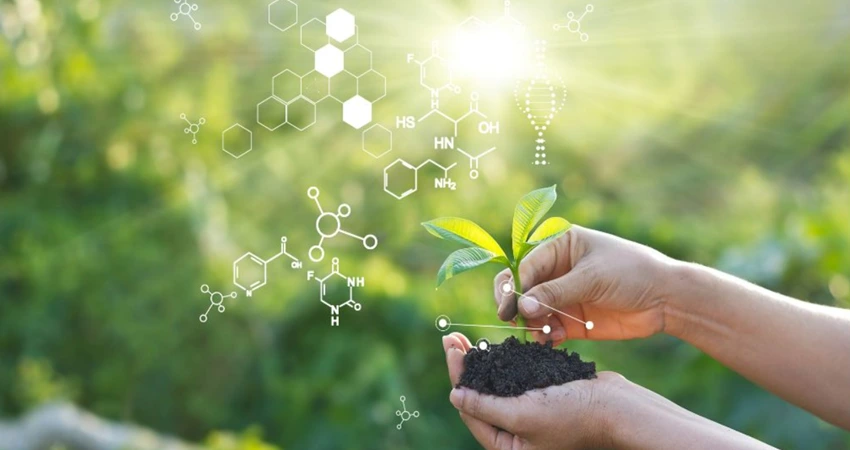1. What is corrosion ? Give examples.
The well-recognised example of corrosion is the rusting of iron and steel, when exposed to the atmospheric conditions.
During this process the metal becomes weak.

2. What are the effects of corrosion ?
Ans. Effects of corrosion are briefly given below :
- Loss of efficiency of the metal.
- Contamination or loss of the product.
- Increase in maintenance and production cost.
- Plant shut downs due to failure.
3. What is the difference between dry and wet corrosion
| S. No | Dry or Chemical corrosion | Wet or Electrochemical corrosion |
| 1. | Occurs in a dry state | Occurs in presence of moisture or electrolyte |
| 2. | Involves direct chemical attack on the metals by environment | Involves setting up of a tiny galvanic cells |
| 3. | Follows adsorption mechanism | follows mechanism of electrochemical reaction |
4. What are the three important types of chemical corrosion?
Ans. (a) Oxidation corrosion
(b) Corrosion by hydrogen
(c) Liquid metal corrosion
5. What is Pilling – Bedworth ratio ?
Ans. Pilling and Bedworth proposed that the oxidation resistance is related to the volume ratio of oxide film formed and metal consumed. This ratio is called Pilling-Bedworth ratio. This can be mathematically represented as
R=Md/nmD
Where M – mass of metal oxide
m – atomic weight
d – density of the metal
D – density of the scale
n – number of metal atoms in a molecular formula of the scale (𝑛=2 for Al2 O3)
6. What is hydrogen embrittlement ?
Ans. It is a type of corrosion occurs when a metal is exposed to hydrogen environment. Hydrogen in the atomic form diffuses into the metal matrix and collects in the voids present inside the metal. These hydrogen atoms combine with each other forming hydrogen gas. Collection of these gases in the voids develop very high pressure which causes cracking or blistering of metal. Metal loss its ductility due to this type of corrosion.
7. What is decarburisation ?
Ans. When steel is exposed to hydrogen environment, hydrogen atom enter inside the steel. This hydrogen atom reacts with carbon, which is providing strength to the steel and produces methane gas. Collection of this gas inside the steel leads to cracking. This method of removal of carbon from steel is called Decarburisation.
- When two dissimilar metals are in contact with each other in the presence of corrosive environment.
- When dissimilar parts of the same metal are in contact with an aqueous solution of an electrolyte.
9. Differentiate chemical corrosion with Electrochemical corrosion.
| S. No | Chemical Corrosion | Electrochemical corrosion |
| 1. | It Occurs in dry condition | It occurs in the presence of electrolyte or moisture. |
| 2. | It involves the direct chemical attack of the metal by the dry gases present in the environment. | It involves setting up of large number of tiny galvanic cells. |
| 3. | It is based on adsorption mechanism | It is based on mechanism of electrochemical reactions. |
| 4. | It is slow process. | It is a fast process. |
| 5. | Corrosion products accumulate at the same place where corrosion occurs. | Corrosion occurs at the anode, but products accumulate near the cathode. |
10. What is concentration cell corrosion ? Give an example.
11. What is pitting corrosion ?
Ans. Pitting corrosion is a localised accelerated attack resulting in the formation of cavities around which the metal is relatively unattached. Thus, pitting corrosion results in the formation of pin holes, pits and cavities in the metal.
12. What are the factors, which influences corrosion ?
13. How is rate of corrosion expressed ?
(ii) ipy – inch per year
14. Write few difference between sacrificial anodic and impressed current cathodic protection method
| S. No | Sacrificial anodic protection method | Impressed current cathodic protection method |
| 1. | For short term protection it is economical. | More suitable for long term operations. |
| 2. | Requires periodical replacement of sacrificial anodic material. | Anodes are stable and do not corrode. |
| 3. | No external power supply required. | External power supply required. |
15. How the corrosion is reduced by modifying the environment:
(ii) By addition of specific substances, which neutralise the effect of corrosive constituents of the environment.
| Read More Topics |
| Manufacture of common refractories |
| Write a note on synthetic abrasives |
| An overview of primary alkaline battery |





